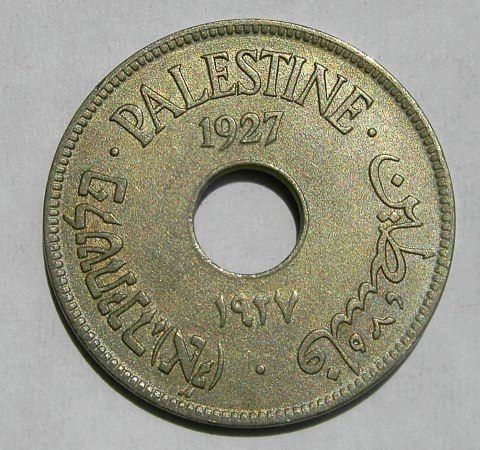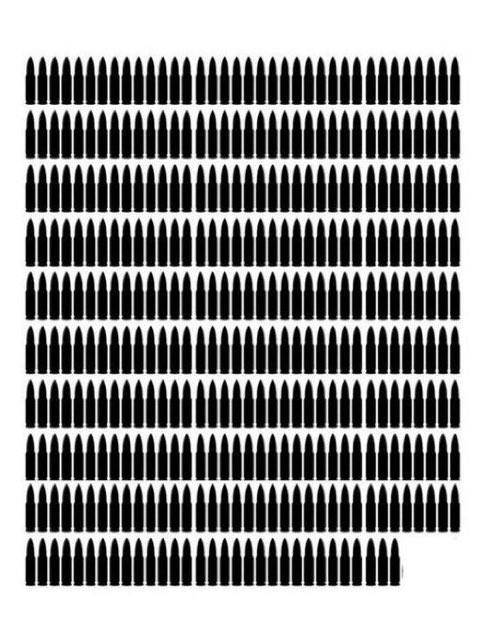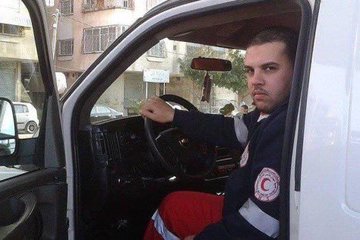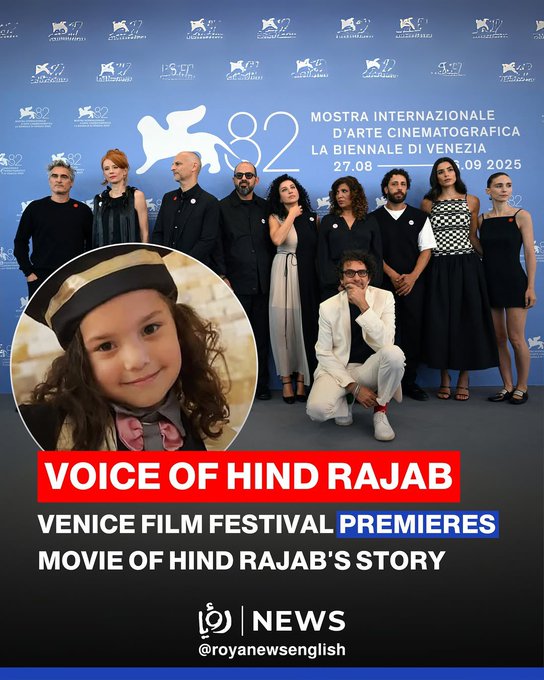Ibaitik Itsasora
******
Gaza BEFORE Israel showed up
Israel is a criminal state
Bideoa: https://x.com/i/status/1887980771178070396
******
******
Zionists in 2025… “Palestine never existed”
Zionists in 1899… “We will colonise Palestine”
In 1948 Albert Einstein foresaw the Israeli terrorism in Palestine that would eventually bring a catastrophe on the Jewish colonists.
******
Wikipedia
Euskaraz:
Hind Rajaben hilketa
(https://eu.wikipedia.org/wiki/Hind_Rajaben_hilketa)
English:
Killing of Hind Rajab
(https://en.wikipedia.org/wiki/Killing_of_Hind_Rajab)
Segida:
Say her name! HIND RAJAB Don’t forget her.
Bideoa: https://x.com/i/status/1963866941472555238
oooooo
Motasem A Dalloul@AbujomaaGaza
When you remember the little lovely girl Hind Rajab, don’t forget the medics who were killed trying to save her: Yousef Zeno and Ahmad al Madhoun.
oooooo
BREAKING: “The Voice of Hind Rajab” stunned the Venice Film Festival with a 22-minute STANDING OVATION, the LONGEST of the festival, amid tears, Palestinian flags, and chants of “Free Palestine.”
Bideoa: https://x.com/i/status/1963311139036827900
oooooo
“The Voice of Hind Rajab” leaves the crowd in tears with a record-breaking 22-minute standing ovation at Venice Film Festival.
Bideoa: https://x.com/i/status/1963303185465946301
oooooo
22-minute ovation on their feet for the cast of The Voice of Hind Rajab
Bideoa: https://x.com/i/status/1963319344881889661
oooooo
‘THE VOICE OF HIND RAJAB’ received a 22-minute standing ovation at the 82nd Venice Film Festival.
The longest of the festival so far.
Bideoa: https://x.com/i/status/1963285550775111732
oooooo
#TheVoiceOfHindRajab executive producers Joaquin Phoenix and Rooney Mara hug the cast after the world premiere of the film at the #VeniceFilmFestival
Bideoa: https://x.com/i/status/1963281292696637919
oooooo
“The Voice of Hind Rajab” stuns #VeniceFilmFestival with its longest standing ovation of 22 minutes amid tears and “free Palestine” chants.
Bideoa: https://x.com/i/status/1963284636341358846
oooooo
Joaquin Phoenix and Rooney Mara, executive producers of the competition title, on their feet to congratulate the filmmakers and cast of The Voice of Hind Rajab. The Gaza drama from filmmaker Kaouther Ben Hania received a rapturous reception from the crowd.
Bideoa: https://x.com/i/status/1963287239984566426
ooooooo
‘THE VOICE OF HIND RAJAB’ is the riskiest movie of the festival: not because of the real story or the Palestine factor, but because turning a real-life tragedy from just 18 months ago into a dramatized feature could have easily become sentimental or exploitative.
#TheVoiceOfHindRajab star Motaz Malhees holds up a Palestinian flag during the 23-minute-plus ovation for the film in Venice, and the crowd chants, “Free Palestine”
Bideoa: https://x.com/i/status/1963285045134979168
oooooo
#TheVoiceOfHindRajab cast hold up a picture of 6-year old Hind Rajab during the 23-minute-plus ovation for the film in the #VeniceFilmFestival.
The film tells the story of Hind, who was killed by Israeli forces in Gaza last year along with six of her family members
Bideoa: https://x.com/i/status/1963283121488744805
oooooo
The Voice of Hind Rajab, a Gaza drama from filmmaker Kaouther Ben Hania, receives a rapturous reception here after its world premiere here at the Venice Film Festival, receiving a 21-minute standing ovation, the longest at the 82nd festival. Lots of sobbing and tears throughout. #Venezia82
Bideoa: https://x.com/i/status/1963285832145530956
oooooo
Voice Of Hind Rajab Film Premiered at the Venice Film Festival
Only hearing GREAT things
‘The Voice of Hind Rajab’ Review: A Tender and Devastating Elegy for a 6-Year-Old Girl Killed by the IDF
indiewire.com
‘The Voice of Hind Rajab’ Review: A Tender and Devastating Elegy for a Six-Year-Old Girl Killed by…
ooo
‘The Voice of Hind Rajab’ Review: A Tender and Devastating Elegy for a Six-Year-Old Girl Killed by the IDF
Venice: Filmmaker Kaouther Ben Hania lets the real-life Hind speak for herself — to gravely emotional effect.
September 3, 2025 10:35 am

‘The Voice of Hind Rajab‘
Mime Films, Tanit Films
During my journalism MA, when I decided, “No, thank you, news journalism isn’t for me,” and “Yes please to the softer world of film journalism,” I did not imagine that film reviewing would ever entail passing artistic judgement on documentary evidence of war crimes. Nor that I would be doing so in a global climate in which the war criminals in question, far from being held to account, are continuing on in the same vein.
There is no distance at all between what Kaouther Ben Hania depicts and now. It would be sufficiently devastating if the atrocities in “The Voice of Hind Rajab” only existed in hyper-recent living memory, but no, the Israeli violence toward Palestinians has escalated since the date of its setting: January 29, 2024. Watching this film feels like RSVPing for a funeral of someone who is still alive. It is also an elegy for a child whose life force is heartrending, because we know it doesn’t stand a chance.
The story of six-year-old Hind Rajab made headlines in January 2024 after the Palestine Red Crescent released audio of her distressed emergency call, made from a service station in Tel al-Hawa in southern Gaza. Even establishment news channels, generally averse to displaying the humanity of individual Palestinians, could not resist this cri de coeur of an innocent in peril. Her sweet, trembling voice, saying, “I’m scared, come and get me,” traveled around the world. She was begging to be rescued from a car full of the fresh corpses, as night and the IDF closed in on her.
For her latest film, Tunisian director Kaouther Ben Hania has sourced the entire call and treated it with respect, horror, and grief, affording it space to play out in in full without attempts to visualize, animate, or reconstruct what is happening on the ground for Hind. Instead, whenever we hear Hind’s voice, sound waves fill the screen and in the corner: 240129.WAV. On every level, this is the right choice. The words are enough. The fear in her little voice as she explains her situation in bursts tells us everything. Any extra trimmings would land somewhere between glib and sacrilegious.
Most of the film’s visual sequences are reconstructions of the experiences of the Palestine Red Crescent staff who were working in their West Bank office at the time. The news clip did not convey that there were many calls from Hind across a period of hours, as the increasingly desperate workers tried to balance the task of trying to organize an ambulance to collect her (for which they had to secure advance Israeli approval) with reassuring a child in a situation for which there is no reassurance.
As the reconstruction goes: at the Palestine Red Crescent Emergency Call Centre in Ramallah, Omar (Motaz Malhees) is playing rock, paper, scissors when a call comes in from Germany. A man is ringing on behalf of relatives stuck in a car in Tel al-Hawa — an area evacuated by the IDF that morning. Once connected, the first voice we hear is a woman. Amid screams and the sound of bullets, she is killed. Omar’s office is characterized by pristine normality — with its glass walls and desktop computers, its phones and its headsets.
The contrast between this and an aural document of human life being snuffed out is a shock that never wears off. Hania doesn’t waste time or drum up superficial intrigue, she just starts the film. Within minutes, we hear Hind’s voice.
All of the phone calls used in the film are the real audio, and the air is sucked from the screen whenever they play. The actors’ main task is to feel as we feel, hearing what it sounds like to be a whole person stalked by violent death. Omar is no longer that man who was playing rock, paper, scissors; he is on a knife edge. He is us and we are him. We are also his colleagues Rana (Saja Kilani), Mahdi (Amer Hlehel), and Nisrine (Clara Khoury), stirred to do everything in our power to respond to the voice of Hind Rajab in such a way that she is OK again.
The first 20 to 30 minutes of the film are a devastating immersion in the psyche of a child trapped in a nightmare. The cadences of Hind’s voice are vivid; she has not gone dull with shock. She is real! She is alive! She wants more than anything to be rescued and reunited with her mother. At first, Hind describes the bodies of the relatives around her as “sleeping.” The adults in the call center piece the scene together while trying to keep the horror out of their voices. Rana forces herself to create a soothing, familial tone. They need Hind to stay in the car, because to leave it increases the likelihood of her being shot. How do you make that pitch to a six-year-old? The Red Crescent staff deal with death on a daily basis but they have not grown hard and Hind’s voice has undone Rana and Omar.
A scuffle breaks out between Omar and his boss Mahdi. Omar is desperate to send an ambulance. Mahdi knows what will happen if they send an ambulance without securing Israeli permission through the Ministry of Health or the British Red Cross. He shows Omar a gallery of martyred ambulance drivers. Omar yells, “People like you are the reason we’re occupied,” but he doesn’t really mean it. They’re just fed up of being helpless. How have we created a world where a six-year-old Palestinian child trapped in a car with her dead relatives doesn’t qualify as an emergency?
The theatrics are slightly hammy, which is a relief, as it affords the audience a chance to recollect themselves and remember that it’s only a movie (right?). Hania gives us breathing room. She doesn’t use sentimentality as a stick to beat the audience into numbness. Made with the cooperation of the PRC, the film provides operational context so that, in and around hearing from Hind, we develop a sense of the space. There are TV screens for rolling news and live maps with green dots that show where ambulances are — this will later become a source of hope-against-hope. There is a wall of photos of callers who died on the line. It is a clean and modern HQ similar to offices across the world where most of us have worked at one time or another.
Omar tracks how long it has been since Hind first called by writing numbers in marker pen on Mahdi’s glass office wall. Something strange happens in the brain when hearing the living voice of a dead child; you start to think that maybe she can be saved. If Hind is both herself and emblematic of other six-year-old Palestinian girls in Gaza, then this is not a crazy thought.
To be clear, this is a film specifically about her. This is her elegy, her memorial, her voice, her face.
Hania is wise to the fact that she does not need to make macro political statements because, in the story of this night, the lawless barbarism of the IDF is laid bare. Running counter to this, the audience surrogates at the PRC do the only thing they can, which is to try to stay connected to Hind, however bleak things become. In this respect, they mirror those across the world bearing witness to a genocide that keeps grinding on. They can’t make it stop, and they can’t hang up the phone.
The interplay between raw audio and physical reconstructions is deftly and unobtrusively handled. Hania has form in metafiction, however this is a step up even from the queasily gripping “Four Daughters.” The gravity of the subject has sharpened her storytelling instincts, such that she has simultaneously cleared space for the audio to be the heart of it all, while making sure that there is enough narrative structure for it to land with maximum impact and clarity.
The filmmaker is sensitive when it comes to building narrative drama for, although there are ticking-clock procedural elements, the source of narrative tension is — in the end — a source of the most unequivocal damnation of Israel. Mahdi and Omar go to great lengths to secure an ambulance through “the proper channels.” They do everything right. And still…
All of these elements are set up, only to be cleared away again as the film returns to its center of gravity. Violence is not the climax of Kaouther Ben Hania’s film. Make no mistake, it is there and crime scene footage shows just enough to make your imagination cave in on itself.
But this soulful memorial wants us to see Hind through the eyes of those who loved her. And not just Hind — everyone in the film’s purview whose life was brutally cut short. From the photography wall to the images that pointedly flash up when Omar is calling paramedics, Yusuf al-Zeino and Ahmed al-Madhoun, this film’s sophistication is set up to make space for unsophisticated emotions: grief and love, which under conditions of genocide, are the same thing. “The Voice of Hind Rajab” is an invitation to a public mourning.
“The Voice of Hind Rajab” premiered at the 2025 Venice Film Festival. It is currently seeking U.S. distribution.
oooooo
Hussain “Hoz” Shafiei@HussainShafiei
Big, heartfelt thanks to Joaquin Phoenix and Brad Pitt, and all the incredible producers behind The Voice of Hind Rajab. Thank you for keeping Hind Rajab’s memory alive. This story—of a child mercilessly shot 550 times simply for being Palestinian—must not be forgotten.
Your courage to elevate her voice is an act of humanity in a world that needs to remember.
Bideoa: https://x.com/i/status/1963549406118252714
oooooo
(Destroyed car Hind was in)
oooooo
Geure herriari, Euskal Herriari dagokionez, hona hemen gure apustu bakarra:
We Basques do need a real Basque independent State in the Western Pyrenees, just a democratic lay or secular state, with all the formal characteristics of any independent State: Central Bank, Treasury, proper currency1, out of the European Distopia and faraway from NATO, being a BRICS partner…
Euskal Herriaren independentzia eta Mikel Torka
eta
Esadazu arren, zer da gu euskaldunok egiten ari garena eta zer egingo dugun
gehi
MTM: Zipriztinak (2), 2025: Warren Mosler
(Pinturak: Mikel Torka)
Gehigarriak:
MTM klase borrokarik gabe, kontabilitate hutsa da
oooooo
1 This way, our new Basque government will have infinite money to deal with. (Gogoratzekoa: Moneta jaulkitzaileko kasu guztietan, Gobernuak infinitu diru dauka.)
















